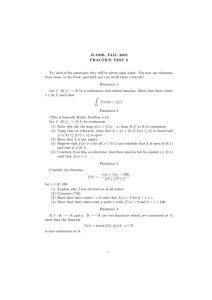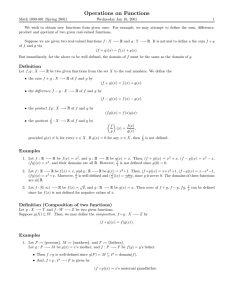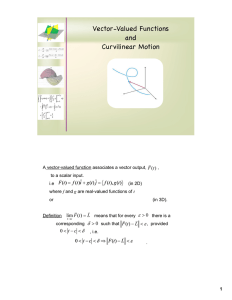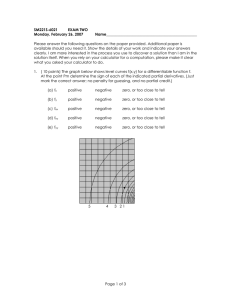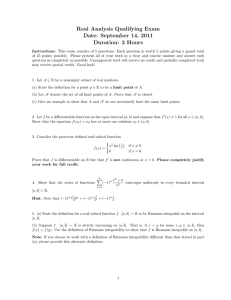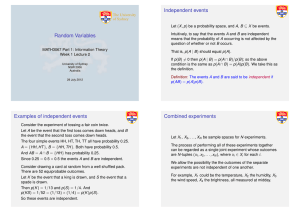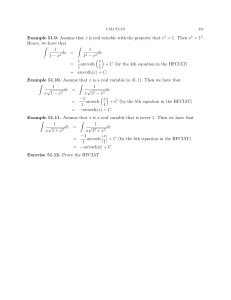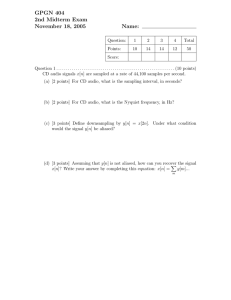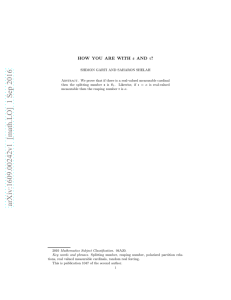517 HW9
advertisement
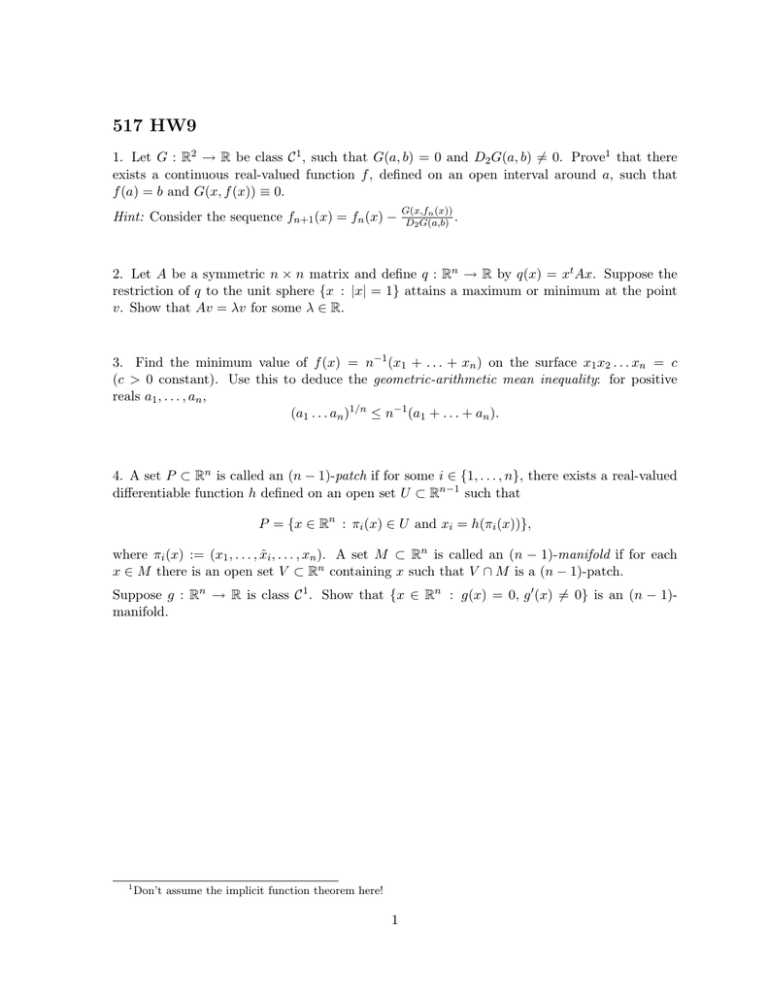
517 HW9
1. Let G : R2 → R be class C 1 , such that G(a, b) = 0 and D2 G(a, b) 6= 0. Prove1 that there
exists a continuous real-valued function f , defined on an open interval around a, such that
f (a) = b and G(x, f (x)) ≡ 0.
Hint: Consider the sequence fn+1 (x) = fn (x) −
G(x,fn (x))
D2 G(a,b) .
2. Let A be a symmetric n × n matrix and define q : Rn → R by q(x) = xt Ax. Suppose the
restriction of q to the unit sphere {x : |x| = 1} attains a maximum or minimum at the point
v. Show that Av = λv for some λ ∈ R.
3. Find the minimum value of f (x) = n−1 (x1 + . . . + xn ) on the surface x1 x2 . . . xn = c
(c > 0 constant). Use this to deduce the geometric-arithmetic mean inequality: for positive
reals a1 , . . . , an ,
(a1 . . . an )1/n ≤ n−1 (a1 + . . . + an ).
4. A set P ⊂ Rn is called an (n − 1)-patch if for some i ∈ {1, . . . , n}, there exists a real-valued
differentiable function h defined on an open set U ⊂ Rn−1 such that
P = {x ∈ Rn : πi (x) ∈ U and xi = h(πi (x))},
where πi (x) := (x1 , . . . , x̂i , . . . , xn ). A set M ⊂ Rn is called an (n − 1)-manifold if for each
x ∈ M there is an open set V ⊂ Rn containing x such that V ∩ M is a (n − 1)-patch.
Suppose g : Rn → R is class C 1 . Show that {x ∈ Rn : g(x) = 0, g 0 (x) 6= 0} is an (n − 1)manifold.
1
Don’t assume the implicit function theorem here!
1
